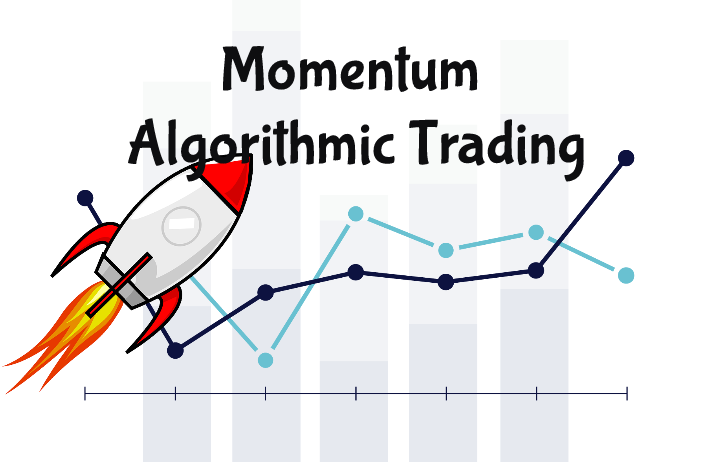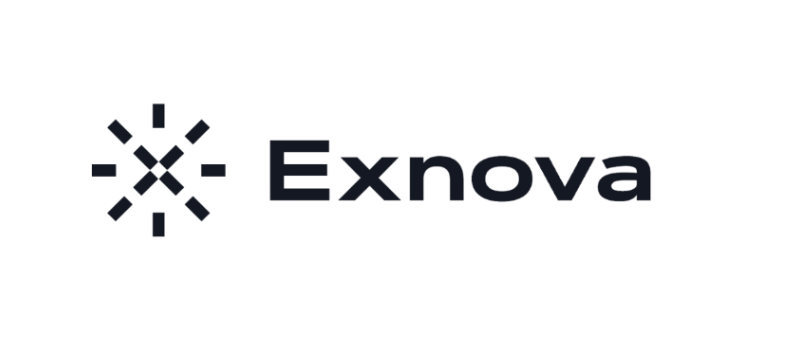
This guide will help you design algorithmic trading strategies to control your emotions while you let a machine do the trading for you. Why would you want to use high frequency algorithmic trading strategies? What kind of algorithmic bots are the best? All will be revealed in this algorithmic trading strategy guide. By the end of this guide, you’ll learn the secret ingredients you need to develop profitable Forex algorithmic trading strategies .
If this is your first time on our site, our team at Trading Strategy Guide welcomes you. Make sure you hit the subscribe button, so you get Strategies free trading directly delivered to your inbox every week.
With the advancement of electronic trading, algorithmic trading has become more popular in the past 10 years. Algo trading first started in the 1980s. Today it accounts for almost 70% of all trading activity in developed markets.
If you want to improve your knowledge of quantitative trading, we recommend you to read Cryptocurrency Trading Winning Strategies and their Why by Ernest P. Chan. Ernest wrote one of the best algorithmic trading strategy books. What sets this insightful book apart from others is its emphasis on examples of algorithmic trading strategies as opposed to theory.
Now let’s answer some of the most common types of questions:
- What is a forex algorithmic trading strategy?
- How do they work?
- Who should trade forex strategies?
- And when should you use a forex algorithmic trading strategy?
Start.
Table of contents
1 What is Cryptocurrency Trading?
2 How does cryptocurrency trading work?
3 Who uses cryptocurrency trading?
4 Introduction to Cryptocurrency Trading Strategy
5 What is the best cryptocurrency trading strategy
5.1 Cryptocurrency trading timing strategy
5.2 Meaning reverse algorithm strategy
5.3 Cryptocurrency Trading Sentiment Strategy
5.4 Market Cryptocurrency Trading Strategy
5.5 Arbitrage Cryptocurrency Trading Strategy
6 Forex Cryptocurrency Trading Strategies
6.1 Last Word – Cryptocurrency Trading Strategy
What is Cryptocurrency Trading?
Cryptocurrency trading is a technique that uses computer programs to automate the process of buying and selling stocks, options, futures, FX currency pairs, and cryptocurrencies.
On Wall Street, algorithmic trading is also known as algorithmic trading, high frequency trading, automated trading, or black box trading. These terms are often used interchangeably.
If you want to learn how high frequency trading works, please check our guide: How High Frequency Trading – ABCs.
Basically, an algorithm is a piece of code that follows a set of step-by-step operations that are performed automatically. Step-by-step operations are based on the inputs you have programmed into it. The input variable can be something like price, volume, time, economic data, and readings. Any type of variance of the input variables can be used.
Once these criteria are satisfied, a buy or sell order will be executed.
Next, you will learn how trading algorithms work. You will also learn what you need to do to make your trades fully automated:
How does cryptocurrency trading work?
Cryptocurrency trading works by following a three-step process:
- Have a trading idea.
- Convert your trading idea into a trading strategy.
- Trading strategies are transformed through an algorithm.

Once the algorithmic trading program has been created, the next step is to test again. Backtesting involves using historical price data to test its viability. If the algorithm gives you good backtested results, consider yourself lucky you have the edge in the market. Finding an edge in the market and then coding it into a profitable algorithmic trading strategy is not an easy job.
Learn how to backtest your trading strategy with our Backtesting Trading Strategies .
The first (and most important) step in algorithmic trading is to have a proven profitable trading idea. Before you learn how to create a trading algorithm, you need to have an idea and strategy.
After you find an edge in the market, you need to be competent and qualified. The best algorithmic traders are competent and proficient in these three areas:
- Knowledge of trade and financial markets.
- Quantitative analysis or modeling.
- Programming skills.

What are the best programming languages used in algorithmic trading?
Algorithmic Trading Python is probably the most popular programming language for algorithmic trading. Matlab, JAVA, C++ and Perl are other algorithmic trading languages used to develop unbeatable black box trading strategies.
Right now, the best coding language for developing Forex algorithmic trading strategies is MetaQuotes Language 4 (MQL4 ).
Let’s make a summary of what you need to develop your algorithmic trading strategies PDF:
- A trading strategy based on quantitative analysis.
- Choose the right algorithmic trading software connect to the exchange and execute the trade automatically for you.
- Live data to trade.
- Historical price data to back-test your algorithm.
- IT infrastructure for high-frequency trading. Examples include a powerful computer for processing advanced mathematical models, a server, redundant power, a fast internet connection.)
- Colocation facility to install your server at the location of the stock exchange (Example: NYSE, if you trade stocks). This will help reduce transaction execution and will give you an edge over your competitors. Colocation is commonly used in high frequency trading.
Now let’s see who the market players are. Who is easiest to use algorithmic trading in the trading context?
See below:
Who Uses Cryptocurrency Trading?
In essence, any experienced trader with coding skills can use programmed trading strategies to trade on his or her behalf. An individual trader can code his or her own algo trading robot to do more than just open buy and sell orders. Algorithms can be used for much more complex things like:
- To create complex mathematical calculations.
- Forecast market movements.
- Generate trading signals.
- Risk management
- Et cetera.
The most proficient algorithmic traders are large institutions and smart money. Hedge funds, investment banks, pension funds, prop traders, and broker-dealers use algorithms to create markets. These guys make up the tech-savvy world of algorithmic trading.
Note: Nowadays market creation is done through machine learning. You can learn more about this topic by reading smart market making strategies in algorithmic PDF trading .
Moving forward, we will dive into the various types of algorithmic trading strategies.
See below:
Introduction to Cryptocurrency Trading Strategy

Several algorithmic trading strategies are used to generate profits. Others are used to fill orders. Throughout this algorithmic trading tutorial, the focus will be on algorithms looking for profit. We are not interested in algorithmic order management or order filling algorithms.
Order-filling algorithms execute large numbers of stock stocks or futures over a period of time. Order filling algorithms are programmed to break a large order into smaller pieces. This way it will not move the market against the executed position.
The most common commands and algorithmic techniques used by smart money are:
- Flowing frozen
- Slice of time
- FAUCET
- TWO
- PEG / BBBO
Herd mentality is to follow the big money. If you understand how a large size order can impact the market, you know that if the whole street knows your intentions, you won’t get the price you want in the end.
If you intend to buy ABC stock and the whole street jumps to buy it, the stock price will artificially pump higher. This is a classic case of supply and demand.
Next, we will outline the best algorithmic strategies. What are the most popular trading strategies used in algo trading? Read on.
What is the best cryptocurrency trading strategy?
We have a large array of algorithmic trading strategy examples. We’ll give you an extensive list so you can see the big trends.
In general, most high frequency algorithmic trading strategies will fit into one of the marked categories:
Momentum strategy
Average Reversal Strategy
Strategies based on sentiments
Statistical arbitrage strategy
Market making strategy
The Algorithmic Winning Trading Strategies and Their Bases book will teach you how to implement and test the concepts into your own trading strategy system.
Cryptocurrency trading timing strategy

Momentum-based algorithms simply follow after a momentum spike or ignition occurs. Algo jumped on that spike with buy or sell orders and tight stops. The idea behind momentum-based algorithms is simple. Once the ball begins to roll, it will continue to do so until it finds some kind of resistance.
You can determine market momentum using indicators and price statistics.
A very simple automated trading algorithm used in E&mini S&P 500 futures is programmed to provide buy orders when the Emini S&P 500 makes a new high of the day after open.
Discover some secrets and techniques developed by a 35-year veteran trader for daily trading Emini Futures: Emini Futures Day Trading Strategy .
Meaning reverse algorithm strategy

The average reversal system is a type of algorithmic system that works under the premise that the market is moving 80% of the time. The price is usually attractive for its average price.
Cryptocurrency traders use historical price data to determine the average price of a security. They then open buy or sell orders in anticipation of the current price returning to the average price.
Cryptocurrency Trading Sentiment Strategy

The belief-based algorithm a news algorithm-based trading system that generates trade signals based on how the actual data turns out. These algorithms can also read general retail market sentiment by analyzing the Twitter dataset. The goal of this algorithm is to predict future price movements based on the actions of other traders.
You need a solid understanding of how the financial markets work and strong skills to develop sentiment trading algorithms.
Market trading strategy

Market makers, also known as liquidity providers, are broker-dealers that create a market for an individual instrument. These can be stocks, bonds, commodities, currencies, and cryptocurrencies . The main job of a market making algorithm is to provide the market with buy and sell quotes. Algorithmic marketing can also be used to match buy and sell orders.
One of the most popular market-making algorithmic strategies implies simultaneous placing of buy and sell orders. These types of market making algorithms are designed to capture the spread.
Arbitrage Cryptocurrency Trading Strategy

Most statistical arbitrage algorithms are designed to exploit statistical bias or inefficiencies in the price of one or more assets. The statistical arbitrage strategy is also called the stat arb strategy and is a subset of the mean reversal strategy.
Stat arb involves complex quantitative models and requires large amounts of computing power.
The most common form of statistical arbitrage strategy is the pair trading strategy . Pairs trading is a strategy used to trade the difference between two markets or assets. Pairs trading is essentially taking a long position in one asset, while simultaneously taking an equally sized short position in another.
Make sure you check out our favorite arbitrage bot: How to make money with Arbitraging trading software before reading on.
Forex Cryptocurrency Trading Strategy
The FX algorithmic trading strategy helps to reduce the human error and emotional pressure that accompanies trading. The goal is to build smarter algorithms that can compete with and beat other high frequency trading algorithms.
Most merchants do not have the money to pay for powerful computers and expensive sort servers. Competing with other HFT trading algorithms is like competing with Usain Bolt.
So how can you compete with other customers?
What is the secret to winning this race?
Like Sun Tzu said in The Art of War: Keep your friends close and your enemies closer.
The best way to follow this principle is to analyze how other Forex algorithms work and study their moves.
For example, a dirty secret and standard of practice used by many algorithms is the momentum ignition strategy. This algo seeks to cause a spike in price above a certain key level. Usually this algorithm combines support and resistance , swing high/low, pivot points or other important technical indicators. This action will cause other traders to trade off the return of that move.
The Forex chart below shows you the Forex momentum ignition algorithm in action:

You can train and program your Forex algorithm to respond to this type of behavior. If you have outstanding programming skills, you can build your Forex algorithm system to detect when other algorithms are driving ignition.
Final Words – Cryptocurrency Trading Strategy
Developing your algorithmic trading strategy takes time, but the advantages and peace of mind you get make it worth it. This is a very competitive space that requires superior programming knowledge and skills to be able to develop high frequency trading algorithms .
The rise of high-frequency trading robots has led to a cyberwar being waged in the financial markets. Forex Cryptocurrency Trading Strategies have also provided a number of other trading opportunities that an astute trader can take advantage of.








